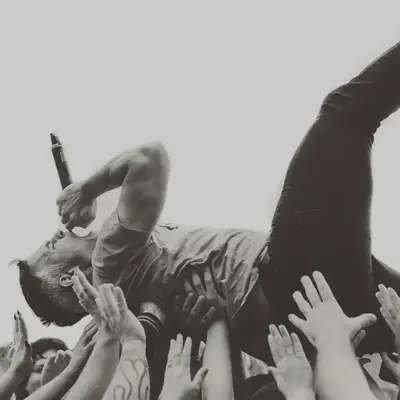How Malignant Narcissists Rise to Power
Let’s be real—if we cut all the narcissism out of politics, we’d barely have any leadership left. Some healthy narcissism is needed to lead, though effective leadership with disorder-level narcissism doesn’t actually work1. Plus, it’s a disaster when that narcissism turns malignant, adding rule-breaking behavior, aggression/sadism, and paranoia to that narcissistic core. These leaders aren’t just self-absorbed—they misuse power and rewrite reality to suit their own grandiose needs… (Think Hitler and Stalin) So how do they rise to power? And why do people keep following them? Let’s take a look at the life cycle of a narcissistic leader.
A Nation’s Daddy Issues
Setting the Stage
It starts with a narcissistic nation, a people group that is self-absorbed, entitled, and thinks their nation is the greatest.
When this people group becomes disillusioned with the way things are, and especially after a massive traumatic event, like a war, economic collapse, or a pandemic, it creates a vulnerable void that needs to be filled.
Sam Vaknin, a researcher of malignant narcissism, noted: “Given a high enough level of frustration, triggered by recurrent…failures in all spheres of policy, even the most resilient democracy ….[begins to favor] “strong men,” leaders whose self-confidence… and apparent omniscience all but ‘guarantee’ a change of course for the better” (pg. 660)2.
A great example is elections across the globe in 2024.
During this unique “super-election year,” in every major developed country with an election, the sitting power lost, despite their ideology.
The post-pandemic, global frustration was so high, there was a desire for any change.
Such frustrations and desire for immediate change set the stage perfectly for the authoritarian leader to carve his path.
Enter the nation’s “father figure” promising to be a savior, rescuing a nation from their cris(es).
Narcoticizing the Followers
Once the malignant narcissist steps into power, the spell is cast. This is the “narcoticizing” phase—where the pain of crisis and trauma is dulled by the illusion of rescue. Vaknin2 describes it as a reenactment of early childhood where the leader becomes an all-loving parent figure, and the people—exhausted from crisis—regress. It’s like, “Daddy’s got it now. Go to sleep.” It’s not just about policy anymore; it’s about emotional sedation. People stop thinking critically because the trauma relief feels too good to interrupt. We start to adopt the leader’s beliefs as our own, not out of careful analysis, but because it’s easier than confronting the ambiguity of reality. It gives the illusion of control by surrendering it to someone “stronger.”
The Honeymoon Phase
Then comes the Honeymoon Phase—a seductive feedback loop between the narcissistic leader and his newly narcotized followers where everything feels great. The charismatic leader is brimming with ego cookie-fueled confidence, and his followers, now fully idealizing him, become mini versions of his grandiosity. Think of it like a psychological echo chamber: “You’re amazing!” [echoes back], “No, you are!” It’s not just loyalty though—it’s enmeshment and identity fusion. However, even when the leader starts to fail, he doesn’t lose support…he becomes even dearer to his followers 🤯. Why? Because now he’s relatable. It’s “Daddy’s just tired. He’ll do better tomorrow.”
Characteristics of Malignant Narcissistic Leaders
The Glitter of Grandiosity
Like any narcissist on a theatre stage, the first thing behind the smoke and mirrors isn’t strategy—it’s sparkly grandiosity. Vaknin put it bluntly: “The narcissistic leader prefers the glamour of well-orchestrated illusions to the tedium of real accomplishments” (pg. 658).2 This means over-optimism in high-stakes situations with (delusional) beliefs such as, “I alone can fix it,” “I’ll end the war in 24 hours,” and “They’ll fold at the negotiation table because I’m just that powerful.” There’s a puffed-up image of greatness that followers feed on… Annndd if the inner circle is made up of equally adrenalized yes-men? Well, now there’s narcissists hyping The Narcissist.
Language, Beliefs, and the Narcissist’s Script
A narcissist’s language isn’t designed to communicate reality—it’s designed to maintain the ego. Vaknin stated, “The only stable belief of the narcissist is the centrality of the self” (pg. 110).2 So beliefs shift depending on the crowd, and convictions morph depending on what boosts the ego—whatever gets applause. It’s psychological enmeshment on a national scale. Like the Wizard of Oz, there’s a loud booming voice and flashing lights, but behind the curtain? Just a guy, pulling levers, obsessed with his reflection.
Crisis or Photo Op?
Add in a crisis to their reign, and here’s where it really unravels. According to Post1, crisis decision-making in narcissistic leaders is deeply impaired because, simply put, they can’t admit when they’re wrong. New information is threatening, and criticism is intolerable. So they avoid experts, preferring to surround themselves with subservient worshipers who reinforce their delusions. Instead of leading, they perform, and instead of solving problems, they stage them. Because for the narcissistic leader, a political crisis is really just an ego crisis. It’s not “How do we fix this?” It’s “How does this affect my image?” Thus, crises become photo ops.
Cracking at the Seams: Cognitive Decline and Psychotic Drift
Power plus malignant narcissism isn’t just toxic—it’s mentally destabilizing. As Vaknin2 warns, these leaders are constantly on the edge of psychosis. The narcissist begins to reshape reality to match his ego because if truth threatens the illusion, then truth must go. Sounds far fetched? It happens! Richard Nixon reportedly was becoming more paranoid in the aftermath of Watergate, as his impeachment loomed. He was talking to portraits in the White House- possibly even holding court with them in the middle of the night. These aren’t just eccentricities—they’re signs of a fragile psyche under siege. With enough power and enough stress, malignant narcissists can spiral into psychotic thinking. They don’t just believe their greatness—they hallucinate it.
The Need for Enemies: Fueling the Paranoid Fire
As we’ve discussed a lot in this series: there is a paranoid orientation to malignant narcissism. These leaders need a villain to make their hero complex work. As Vaknin puts it, they “cast themselves as heroic victims of dark forces,” (pg. 665)2 perpetually believing they are under attack. It’s a full-blown drama triangle, and they need a villain to fight - anyone will do. What matters is that there’s a scapegoat—a symbolic, personified, real-life container for all the narcissist’s “badness.” Because the narcissist’s self-worth depends on the illusion of being the lone protector in a world full of threats, if there aren’t enemies, then is he really that great?
After the Crown: What Happens When the Curtain Falls
A narcissist is loyal to no one but himself. As their reign falters, relationships crumble, and exploitation abounds beyond just the scapegoated. In fact, narcissistic leaders often grow to resent their followers. Seeing their own reflection in the crowd—ordinary, flawed, human—is intolerable. They don’t want to be of the people. They want to be above them. Vaknin chillingly notes, “A narcissistic leader is likely to justify the indiscriminate butchering of his own people by claiming that they intended to assassinate him… or harm the country” (pg 660).2 In short, loyalty doesn’t save you from becoming the next enemy.
The Collapse: Illusions Unmasked
After the narcissistic leader is “deposed, voted out, or dies2”—the truth spills out and the illusion pops. Vaknin describes the unraveling: “Economic miracles turn out to be fraud-laced bubbles… empires disintegrate… revolutionary discoveries are discredited… social experiments expire in mayhem”(Vaknin, pg 659 ).2 It was all an elaborate performance built on ego, manipulation, and—far too often—legally and morally questionable actions. The damage is real, especially for the scapegoated, the marginalized, and yes, even the loyal follower. The narcissist strolls off the stage (or is dragged off)…but the trauma still remains.
The Reckoning: Trauma in the Wake
What’s left then? It’s not just political fallout, but psychological wreckage. The nation isn’t just politically broken…It’s traumatized. Vaknin wrote, “This is the narcissist’s sole legacy: a massive PTSD” (pg 660).2 Followers who once found safety now realize they were manipulated and exploited…and they let it happen. Martin Niemöller’s haunting words come back here: “First they came for the socialists, and I did not speak out—because I was not a socialist. Then they came for the trade unionists, and I did not speak out—because I was not a trade unionist. Then they came for the Jews, and I did not speak out—because I was not a Jew. Then they came for me—and there was no one left to speak for me.” (italics added)
Rebuilding: Rising from the Rubble So how does a nation rise from the ashes? Time. Lots of it. Trust doesn’t return easily. Neither does a sense of shared reality. The people, now wary of being fooled again, may resist being led at all. Or tragically, they may go right back into the arms of another charismatic narcissist, looking for comfort. Because trauma leaves us vulnerable. But if we can confront it, face our own narcissism, own our collective susceptibility, talk about it, learn from it, and stop glorifying the illusion, then there is hope.
Final Thought: The Mirror of History
Vaknin said it best: “Hitler forced us all through a time warp and no one emerged unscathed. He was not the devil. He was one of us. …the banality of evil, just an ordinary loser, a consummate failure, a mentally-disturbed figure, a member of a mentally-disturbed nation, who lived through disturbed and failing times. He was the perfect mirror, a channeling, a voice, and the very depth of our souls” (pg 658).2
This is the horror and the hope. We create these leaders. We fall for them. But that means we also have the power to stop the cycle. The narcissist is not just a dictator on a podium—he’s a mirror. The question is…do we dare to look in?
References
-
Post, J. M. (1993). Current concepts of the narcissistic personality: Implications for political psychology. Political Psychology, 14(1), 99–121. https://doi.org/10.2307/3791395 ↩︎ ↩︎
-
Vaknin, S. (2015). Malignant self love: Narcissism revisited (L. Rangelovska, Ed.). Narcissus Publications. ↩︎ ↩︎ ↩︎ ↩︎ ↩︎ ↩︎ ↩︎ ↩︎ ↩︎ ↩︎ ↩︎











